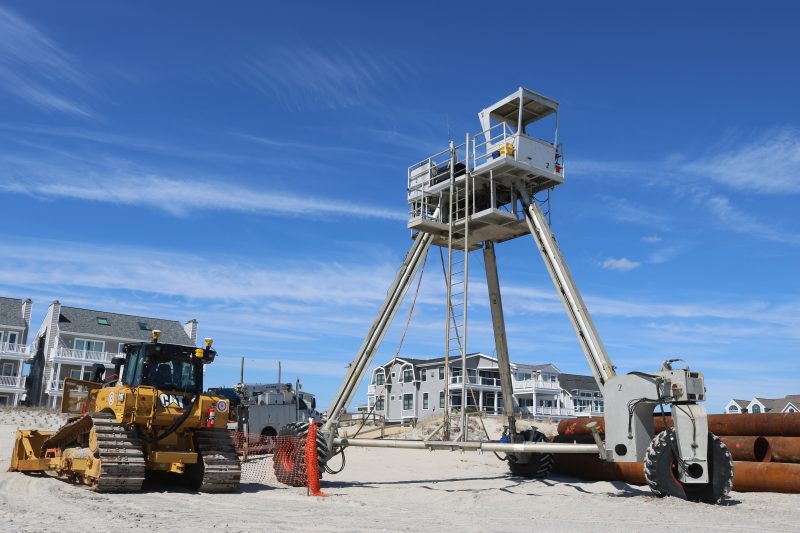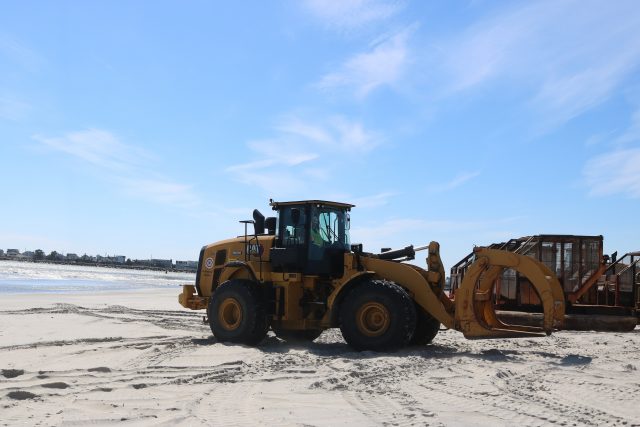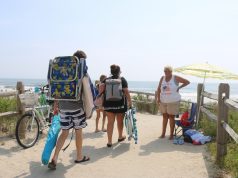By DONALD WITTKOWSKI
The stormy weather lashing the Jersey Shore this week has interrupted a beach replenishment project that will restore Sea Isle City’s eroded shoreline with close to 1 million cubic yards of new sand.
Anchored offshore, a large dredge named “Liberty Island” arrived on Saturday to begin taking sand from the bottom of the ocean and then pumping it onto the beaches through a network of massive pipes.
However, the ship-like dredge took shelter in a “safe harbor” and is currently not working on the project because of the rainy weather and rough sea conditions, said Steve Rochette, a spokesman for the U.S. Army Corps of Engineers.
When the dredge returns, work will resume in the south end of Sea Isle from about 83rd Street to 85th Street, Rochette said. The dredge is owned by Great Lakes Dredge & Dock Co., the contractor hired by the Army Corps of Engineers to perform the beachfill work.
According to Rochette, the dredge placed approximately 44,000 cubic yards of new sand on the beach before the nasty weather interrupted the work.
Sea Isle officials had originally hoped that the project would be completed in time for Memorial Day weekend, the traditional kickoff for the busy summer tourism season at the shore.
Rochette said in an email Wednesday that work is now expected to continue into mid-June due to an extra $5 million worth of sand that is being added to the project.
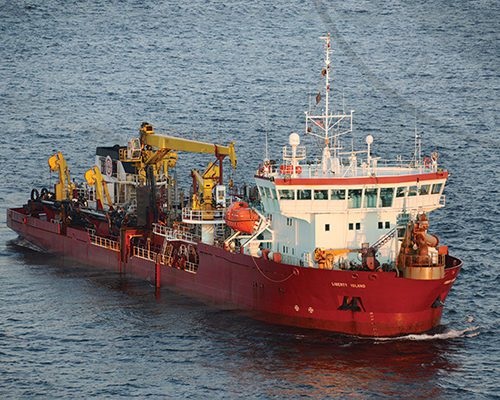
Sea Isle is the last of three towns – Ocean City and Strathmere were the other two – to have their storm-damaged beaches restored by the U.S. Army Corps of Engineers in partnership with the New Jersey Department of Environmental Protection in what was originally a $33.7 million project.
The extra $5 million worth of sand was added to the project in Sea Isle after more federal funding became available in recent weeks, Rochette said.
According to plans, 252,000 cubic yards of new sand will be spread on the beach in central Sea Isle from about 29th Street to 53rd street.
Originally, the project also called for 388,000 cubic yards of beach sand in the south end of the island from about 73rd Street to Townsends Inlet at 94th Street.
However, the $5 million worth of new sand will add an extra 292,000 cubic yards to the south end for a total of 680,000 cubic yards in that area.
Altogether, the project will replenish Sea Isle’s eroded beaches and dunes with 932,000 cubic yards of sand.
To put that amount of sand into perspective, it is enough to fill 140 football fields four feet deep, Mayor Leonard Desiderio said. Desiderio called the extra sand “a great boon for Sea Isle.”
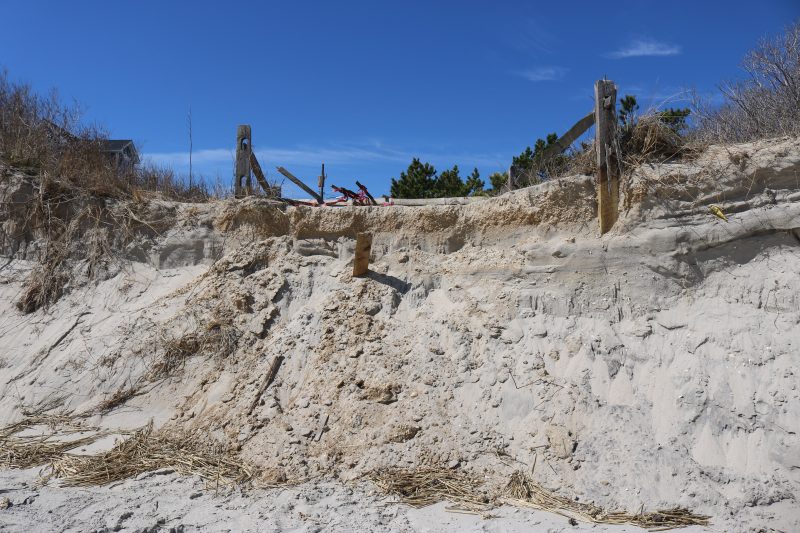
Sea Isle and other Jersey Shore towns have their beaches restored periodically under a 50-year program with the federal government.
“As we’ve discussed before, our participation in the 50-year Beach Nourishment Program is a vital part of our overall mission to maintain our most precious natural resource,” Desiderio said in a statement of the importance of keeping Sea Isle’s beaches in good shape.
The extra sand approved for the project will primarily be used to widen the beach even more toward the ocean, Rochette said.
Another critical aspect of the project is the replenishment of the eroded dunes in certain areas. The dunes in some spots of the south end have suffered significant damage, leaving steep mini-cliffs towering about 10 to 20 feet high.
Wider beaches and bigger dunes will create an even stronger barrier of sand to protect homes, businesses and other property during coastal storms. The project will also have the aesthetic value of making the beaches more attractive for the legions of tourists who visit Sea Isle in the summer.
The project started at the southern end of the island, with new sand to be placed between about 74th Street and 94th Street in Townsends Inlet. Immediately after completion of the south end, the project will move downtown to restore the beaches between about 29th Street and 52nd Street.
Bulldozers, excavators, massive pipes and other construction equipment have taken over parts of the beachfront during the project.
Another critical piece of equipment is a 33-foot-tall Coastal Research Amphibious Buggy, or CRAB. Moving along both in the water and on land, the CRAB deploys instruments on the bottom of the ocean, collecting data to monitor the progress of the project and to survey the beaches.
